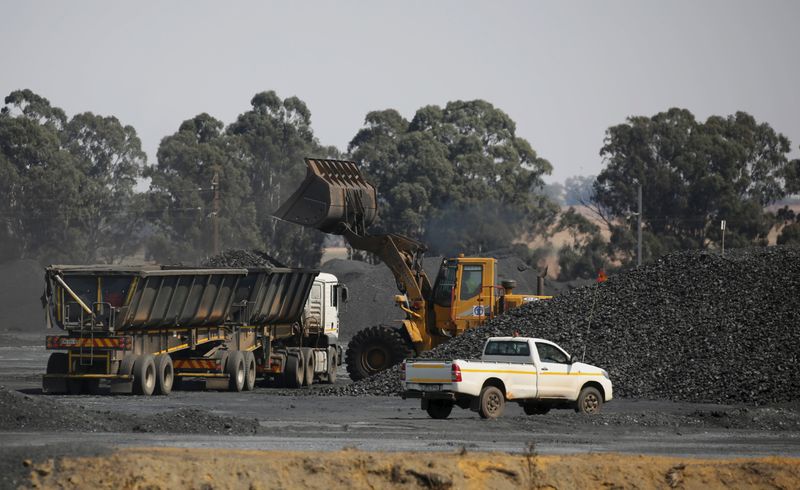(The opinions expressed here are those of the author, a columnist for Reuters)
By Clyde Russell
LAUNCESTON, Australia, Sept 13 (Reuters) - When the price of a commodity rises by 117 percent in a mere 15 weeks, it's generally a sign that something is amiss in the market, and coking coal's recent stellar run is no exception to this rule.
The spot price of Australian premium hard coking coal .PHCC-AUS=SI has surged from $83.40 a tonne on May 31 to $180.90 on Sept. 9.
So far this year, the price of the fuel used mainly to make steel has leapt by 131 percent, making it the best performer among significant commodities.
As with any price surge, there are solid reasons for a rally, but the gains have now reached a point where they have entered the realms of silliness.
Before looking at the reasons why coking coal has rallied so strongly, and why the gains will start to reverse, it's worth noting that there are several prices for the fuel.
In addition to the spot price for free-on-board cargoes from Australia, the world's biggest exporter of coking coal, there is an Australian contract price and futures traded on the Dalian Commodity Exchange in China.
These haven't shown nearly as sharp rallies, with contract prices having gained about 12 percent this year to trade around $92 a tonne. The contract price is used by most Australian coking coal miners, other than the biggest, the joint venture between BHP Billiton (LON:BLT) BHP.AX and Japan's Mitsubishi 8058.T .
Dalian futures DJMc1 are up 28.5 percent from the start of the year, ending on Monday at 794.5 yuan ($118.94) a tonne compared with 618 yuan at the end of last year.
It's likely that the gains in the contract price and the Dalian futures are more reflective than the spot price of the true state of the coking coal market.
So, what is the state of the coking coal market?
Undoubtedly the supply-demand balance is tighter this year than it was in 2015, providing the fundamental basis for a rally.
Import demand is up in China, mainly because of strong steel output and lower domestic production as Beijing tries to cut excess capacity in the overall coal sector.
China's January-August coking coal output was down 2.7 percent, or about 8.6 million tonnes, to 292.38 million tonnes compared to the same period in 2015. loss of coking coal tonnes is most likely an unintended side-effect of the moves by the authorities to reduce coal output of mainly thermal grades, used to generate power.
China's imports of coking coal have risen as domestic output has dropped, with inbound shipments in the first seven months of the year totalling 31.5 million tonnes, up 11.8 percent on the same period last year.
However, in volume terms, imports in the January-July period are up only 3.2 million tonnes, in other words, the gain in imports is less than half of the loss of domestic output. The detailed breakdown of August imports will only be available toward the end of the month.
Add in some supply disruptions in Australia and the conditions for a price rally are in place.
TRADING SHORT SQUEEZE
But this doesn't explain why the spot price in Australia has jumped by a massive 117 percent since May 31.
There are several possible contributing factors, but the most likely explanation is some smart trading.
In a tight market it's possible to initiate a sharp rally in prices by buying up available cargoes and forcing the price higher in what is known as a short squeeze.
The gains for a trader come in having existing inventory on hand to sell once the price jumps. The trading house may lose money on the cargoes it buys at elevated prices, but will make significantly more money on selling their existing stocks at the now higher price.
This trading strategy can be extremely profitable but is unlikely to be sustainable in the longer term.
How long it does last depends on how quickly other participants in the market can move to take advantage of the higher prices.
And there are already signs that the other players are moving, with China's coal miners seeking official approval to boost output. possible that some relaxation on production may be approved, as the last thing the authorities in Beijing will want is prices to keep rising to the point where the competitiveness of the steel industry is threatened.
It's also likely that other coking coal producers, such as Mongolia, Canada and the United States will be moving to ramp up output.
It takes some time to boost an existing mine's output, and even more time to restart idled pits, but the point is that within a few months it's likely that more cargoes will be heading to China.
For example, the United States, the world's second-biggest coking coal exporter, hasn't shipped any cargoes to China this year, but with the current price rally and low freight rates, it will be profitable for miners to look at renewing this trade.
Over the next few months, it's likely that the various coking coal prices will start to converge again, most likely by an increase in the Australian contract price and a much sharper drop in the spot price.
(Editing by Himani Sarkar)
